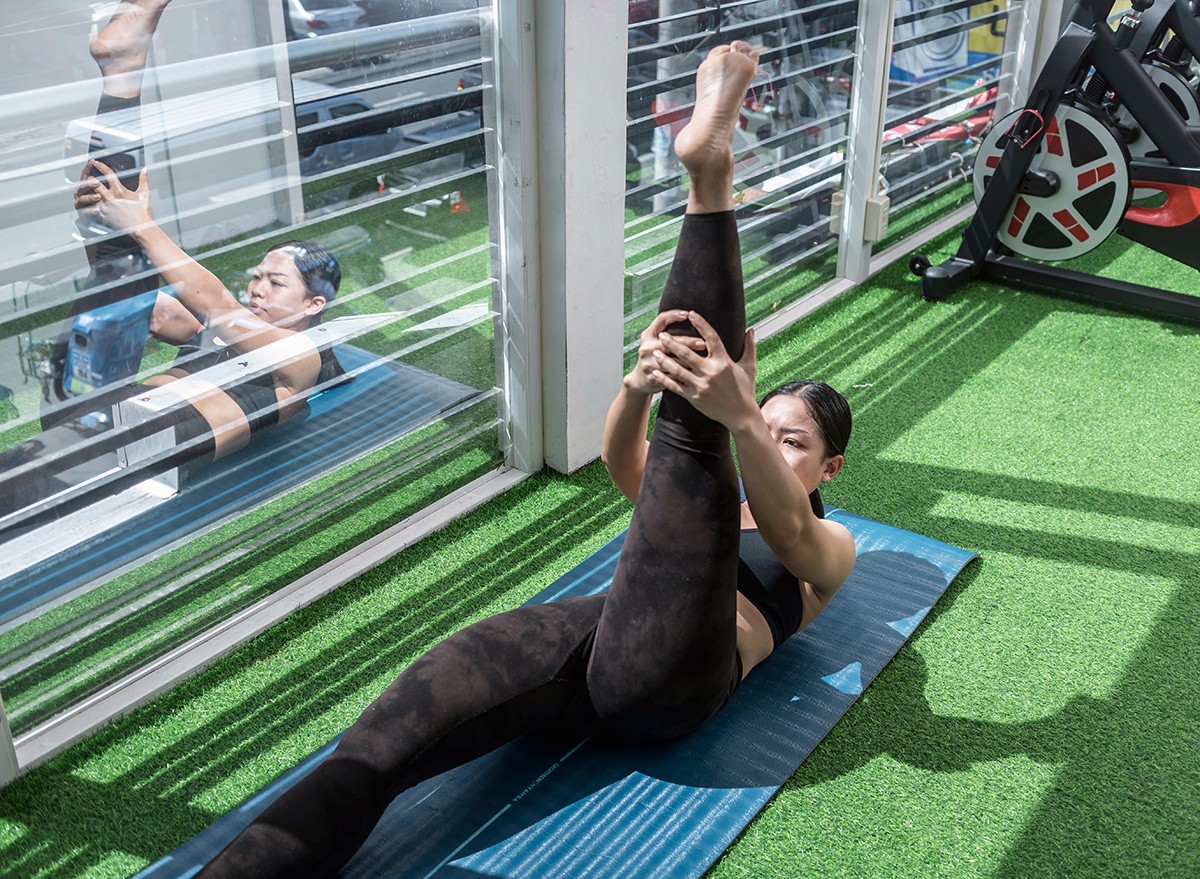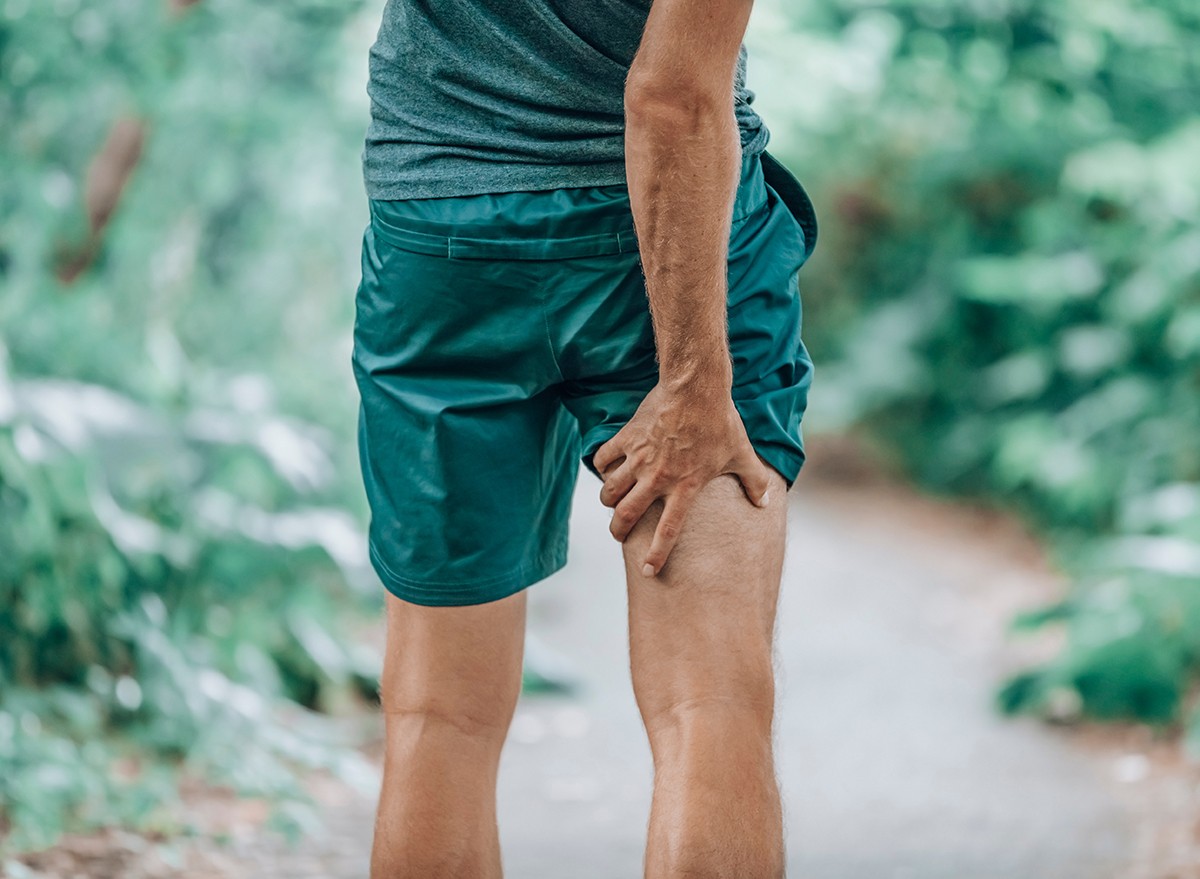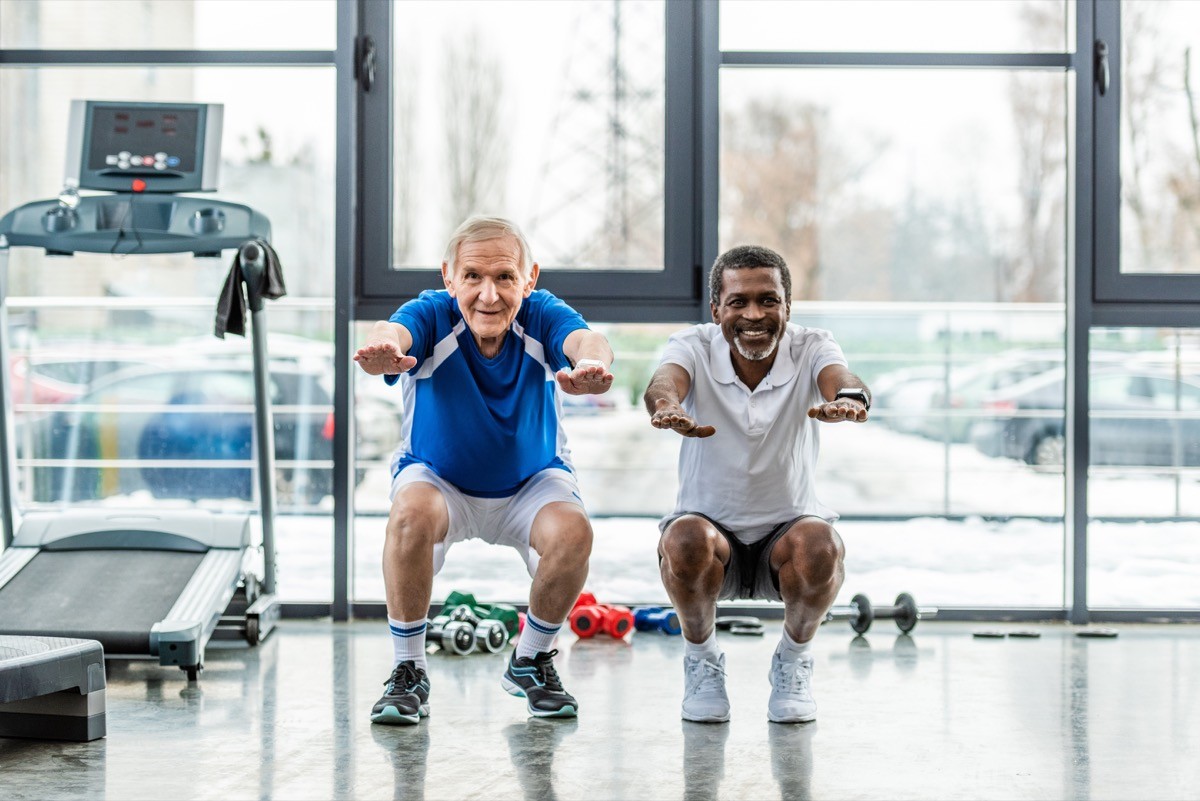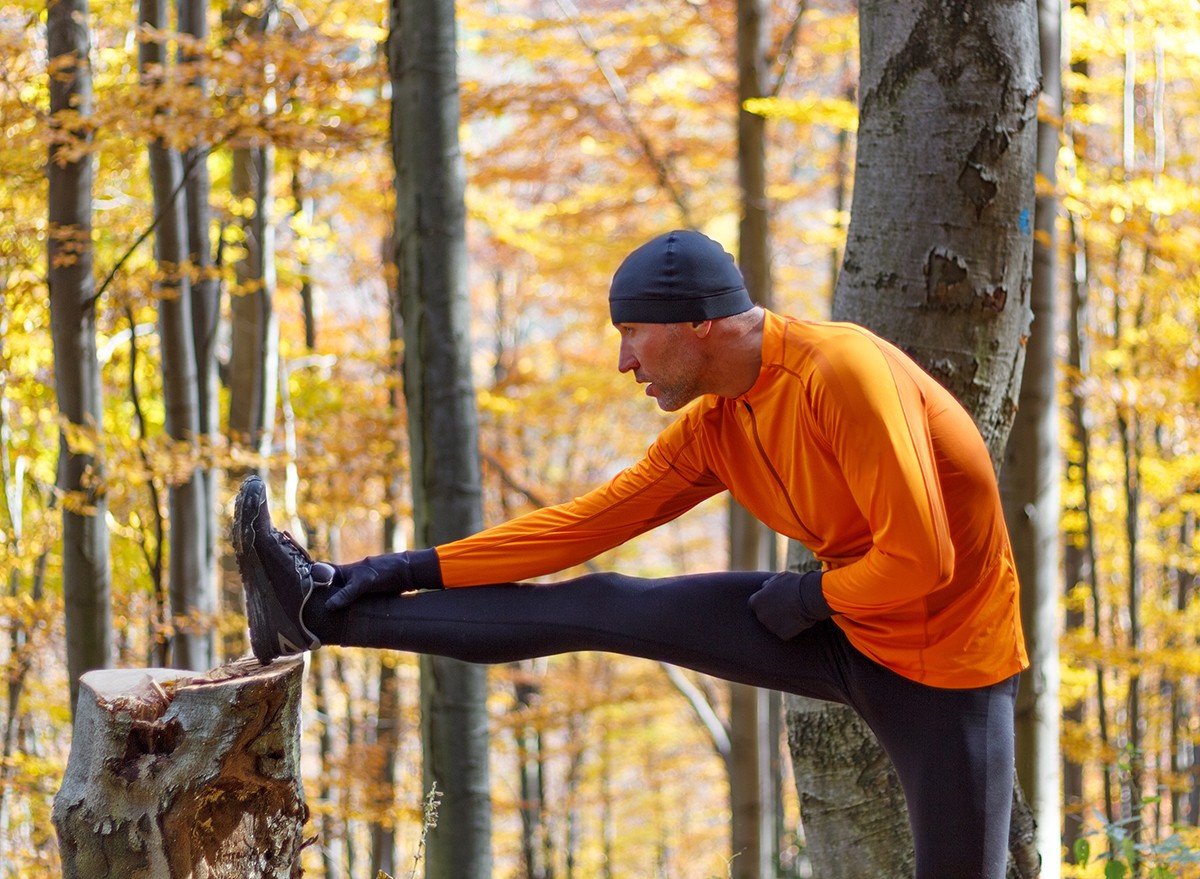Why Everyone Over 50 Should Be Doing This Daily Stretch

Losing muscle and strength is a natural part of aging, even for those who are active. “Joints in the spine, hips, knees and shoulders naturally become more arthritic with age, and our ligaments and the interfaces between our tendons and muscles become more rigid,” Dr. George Eldayrie, a sports medicine physician with the Orlando Health Jewett Orthopedic Institute in Winter Garden, Florida, tells CNN. “It’s a very known process.” In order to prevent sarcopenia, it’s important to live a healthy lifestyle and exercise regularly. Stretching is also crucial for flexibility and injury prevention. Here’s why everyone over 50 should be doing this daily stretch.
RELATED: 10 Stretches to Boost Flexibility and Relieve Tension.
Stretch Your Hamstrings Every Day

While full-body stretches are important, when you’re short on time, focus on your hamstrings. “I’m a big believer in stretching your hamstrings because it helps your knees, your hips, and your lower back. So every day I do a hamstring stretch for the back of my thighs,” fitness pro Denise Austin, 67, tells Prevention.
Lying Down or Standing Up

Austin’s favorite way to do a hamstring stretch is lying down on her back, but it can be done standing up too. “But a hamstring stretch—either lying down, sitting up, or flat on your back—is the number one thing for us women to keep healthy and flexible and pliable,” she says. “If your hamstrings are tight, they could tug on your lower back and give you lower back issues, or hurt your knees and your hip joints. So I always add a hamstring stretch every single day.”
Hamstring Pain

Not stretching your hamstrings can lead to pain all over your body. “When you’re sitting all day, your hamstrings are constantly in a flex position, which can make them tight as well as weak,” Jyima Ofori-Atta, CPT, tells GQ. “Most people don’t realize that the issues caused by this can go far beyond just your legs and into your shoulders, back, and neck. Your body is a kinetic chain and sitting can make many muscle groupings overactive or underactive which contributes to range of motion and muscle inhibitions.”
RELATED: Top 5 Exercises to Improve Your Flexibility.
Preventing Injury

Hamstring stretches can help prevent injury. “If you watch a lot of sports like I do, you notice it being one of the most common injuries you see,” Justin Kraft, CPT, tells GQ. “As an athlete, it could cost you weeks or even months to recover from this. In my own training and with my clients, I have been able to substantially improve performance along with preventing injuries by putting a heavy focus on hamstrings.”
Stretching Tips

“Patients with hamstring issues often get more long-term relief from tightness with specific stability exercises as opposed to stretching alone,” Lauren Hubbard, DPT, tells the Mayo Clinic. “Consider adding activities such as squats or dead lifts. In general, when you’re stretching, keep it gentle. Breathe freely as you hold each stretch for around 30 seconds. Try not to hold your breath. Don’t bounce or hold a painful stretch. Expect to feel tension while you’re stretching. If you feel pain, you’ve gone too far.”
Don’t Force It

If stretching causes continuous pain, get help. “If you’re continuing to experience tension or pain, and stretches do not relieve this tension or pain, consult with a physical therapist, orthopedist or sports medicine specialist,” Hubbard says. “These health care providers can identify the underlying cause of your constant feeling of tightness and, if necessary, provide you with individualized strengthening exercises to improve your symptoms.”